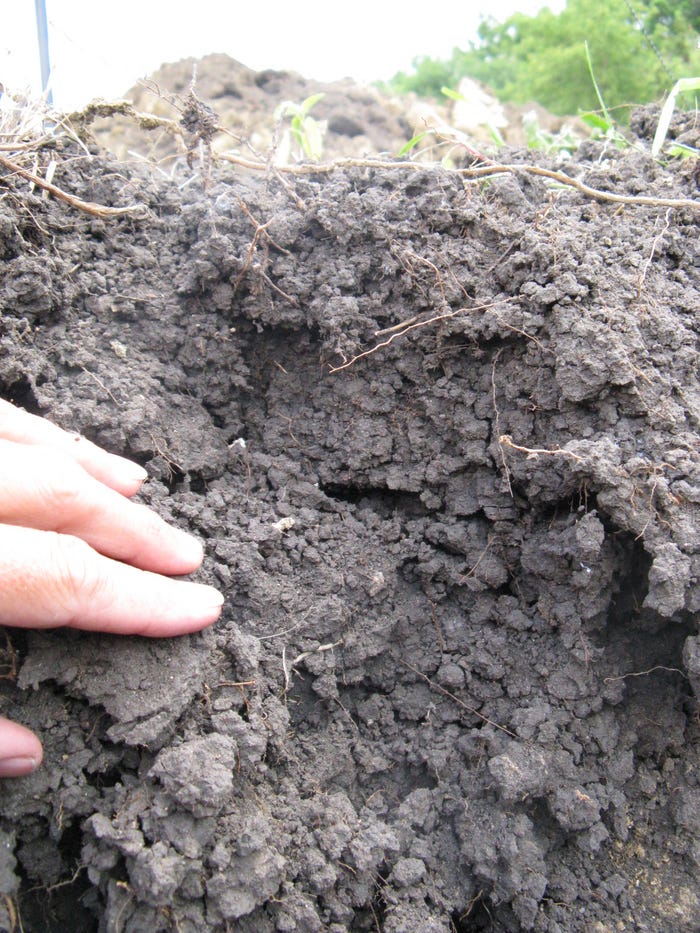September 28, 2015

Dust storms, rills and gullies, soil crusting, runoff, ponding — these are above-ground signs of poor soil health. And below ground: weak soil aggregation, compaction, impaired biological life, restricted water infiltration, stagnant smell, gray color. The prime culprit? Tillage.
“The two factors most detrimental to soil health are erosion and loss of soil organic matter,” says Doug Karlen, soil scientist at the USDA-ARS National Laboratory of Agriculture and the Environment in Ames, Iowa. “Tillage is a contributor to both.”
To see how your tillage practices are affecting your soil’s health, Karlen suggests examining a few shovels full of “the dynamic material supporting your livelihood.”
With a spade, remove a block of soil at least a foot deep. Dig samples across several rows in problem areas, and also in a good area of the field. Then compare. A visual assessment is “quick and dirty, “ Karlen says, “but it will give a farmer a good first look at soil health.” Here’s what to look for.
About the Author(s)
You May Also Like




